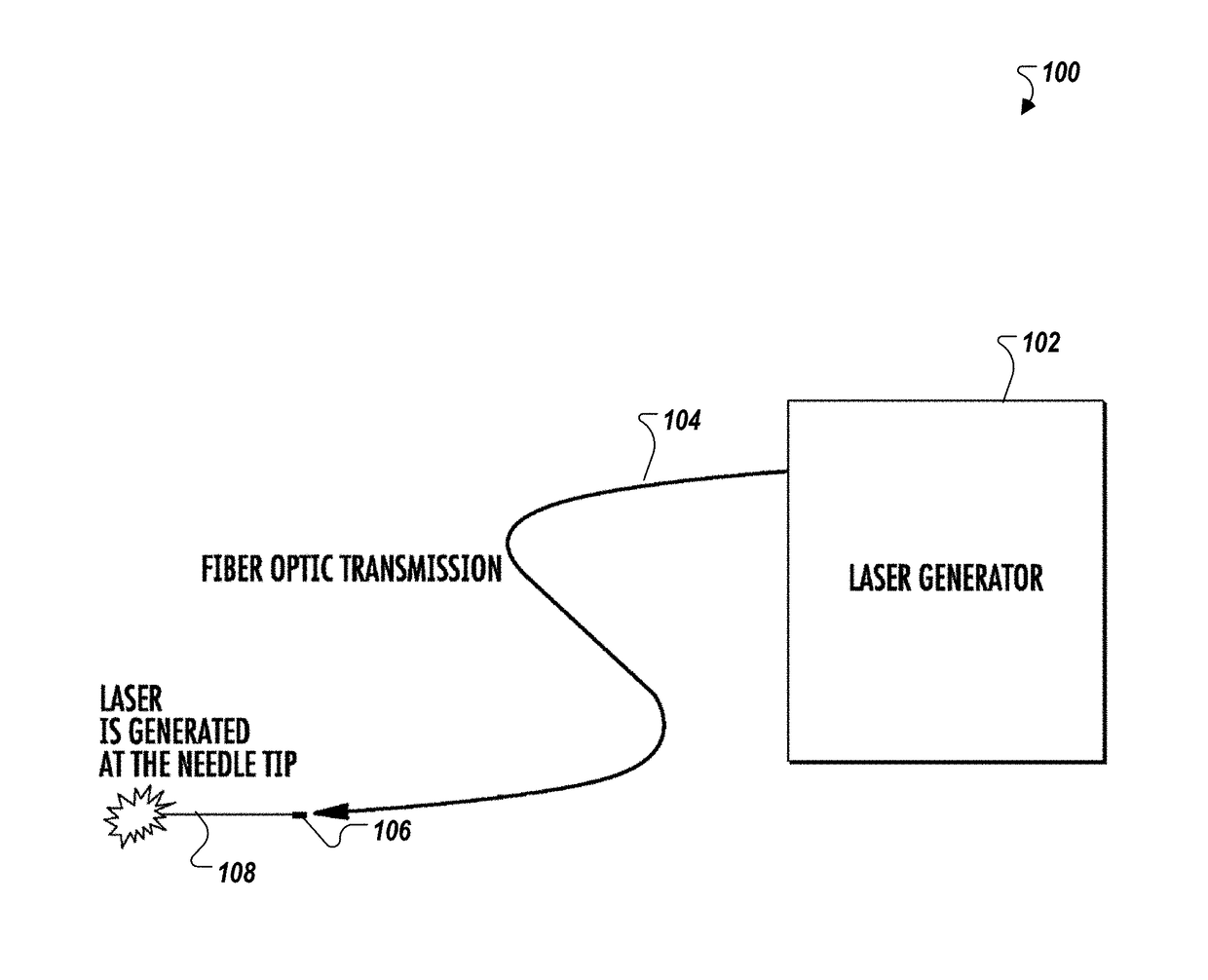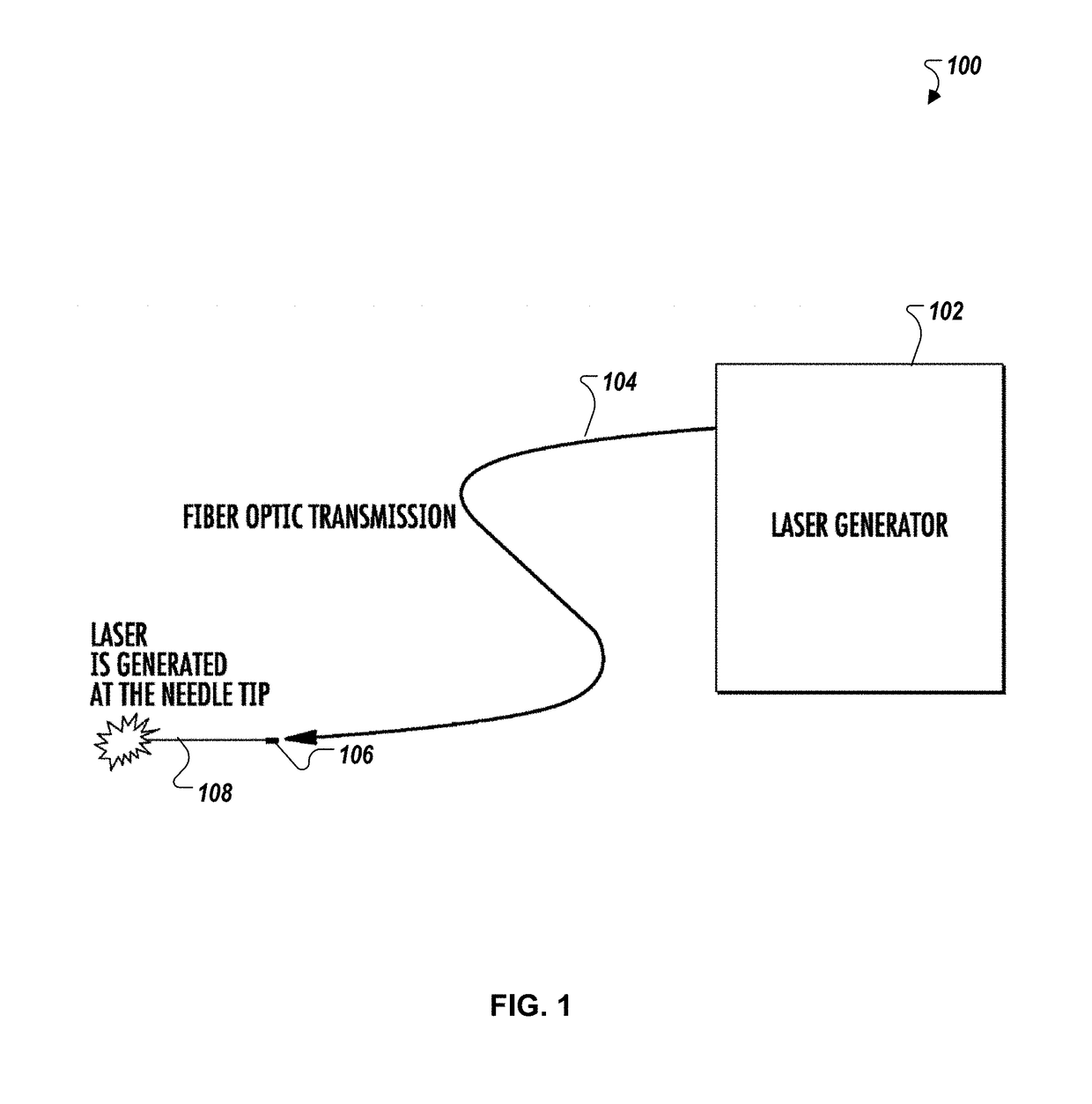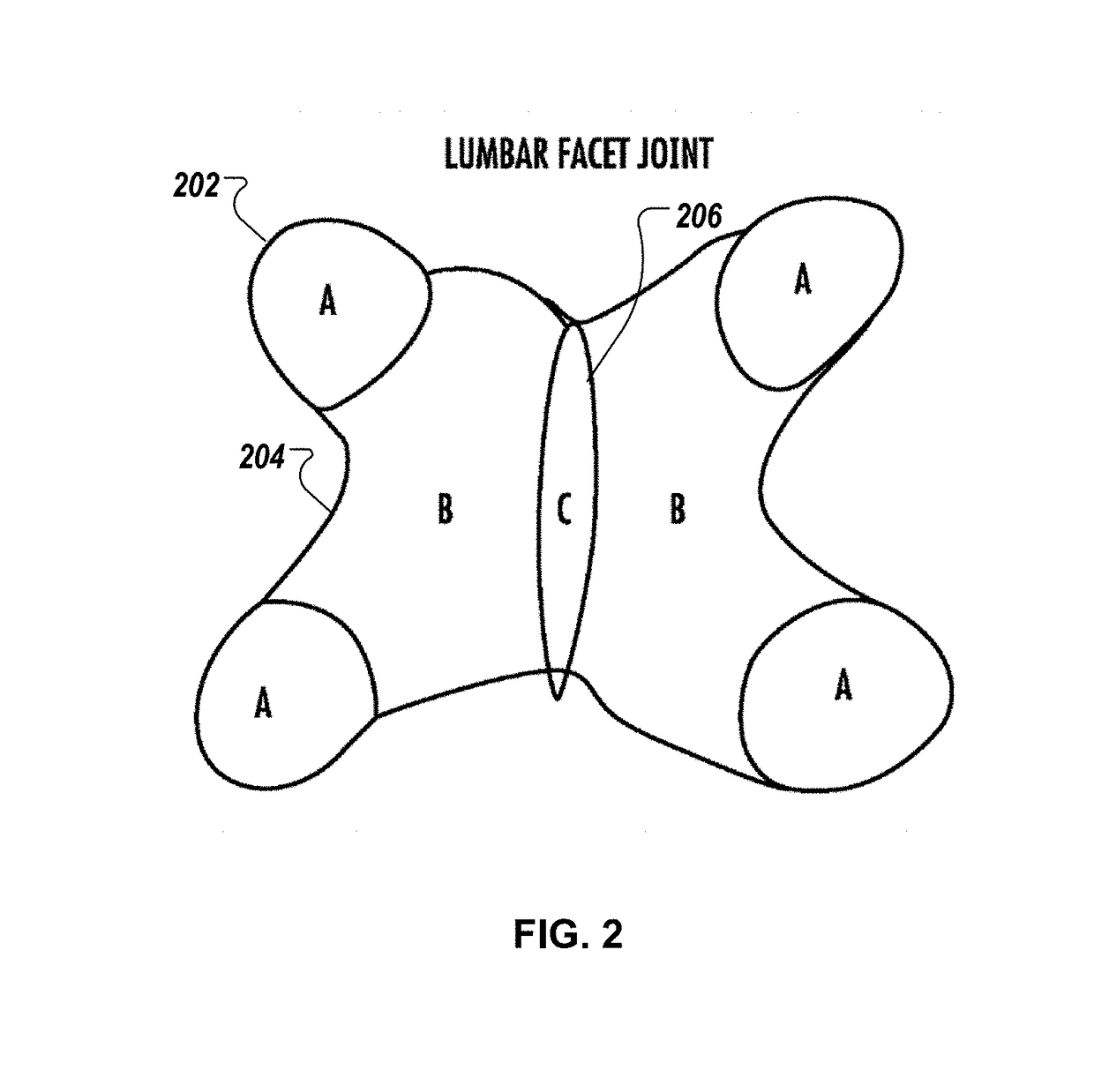Treatment using low intensity laser therapy
a low-intensity laser and treatment technology, applied in the field of laser medical devices, can solve the problem that the dt-lilt does not generate enough heat to destroy tissu
- Summary
- Abstract
- Description
- Claims
- Application Information
AI Technical Summary
Benefits of technology
Problems solved by technology
Method used
Image
Examples
Embodiment Construction
[0017]Current deep tissue medical lasers are typically high intensity lasers, with output powers usually around 100 mW or above, that generate heat to destroy contact tissue using techniques such as hemo-coagulation. However, these deep tissue medical lasers lack sufficient selectivity or specificity to destroy contact tissue without causing collateral damage to surrounding tissue. Traditional low level laser therapy (LLLT) techniques also lack sufficient specificity. Current LLLT techniques use indirect pain relief techniques such as minimal heat generation, vasodilatation or metabolic changes. These lead to temporary pain relief because they do not destroy problematic pain nerves that cause long-term pain.
[0018]The deep tissue low intensity laser treatment (DT-LILT) disclosed in this application selectively destroys nerve cells on contact using the phenomenon of absorption and cell resonance. DT-LILT does not generate heat, or the heat generated is not sufficient to destroy tissue...
PUM
 Login to View More
Login to View More Abstract
Description
Claims
Application Information
 Login to View More
Login to View More - R&D
- Intellectual Property
- Life Sciences
- Materials
- Tech Scout
- Unparalleled Data Quality
- Higher Quality Content
- 60% Fewer Hallucinations
Browse by: Latest US Patents, China's latest patents, Technical Efficacy Thesaurus, Application Domain, Technology Topic, Popular Technical Reports.
© 2025 PatSnap. All rights reserved.Legal|Privacy policy|Modern Slavery Act Transparency Statement|Sitemap|About US| Contact US: help@patsnap.com



